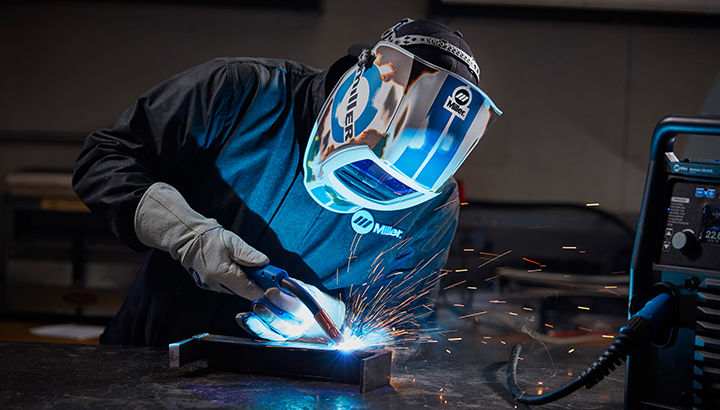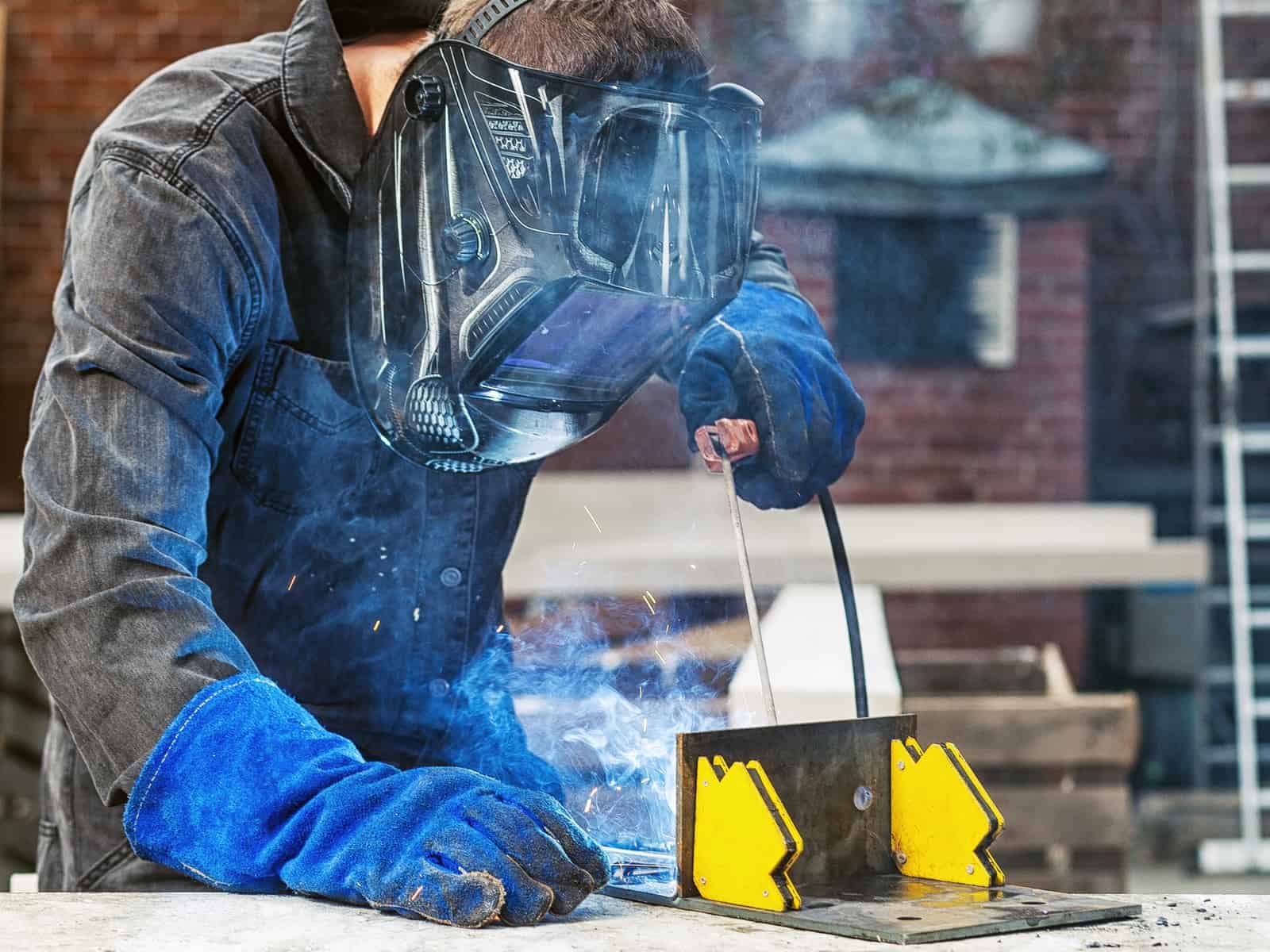Common Welding Repair Issues and Just How to Address Them Effectively
Welding repairs usually encounter a series of concerns that can jeopardize the stability of the final product. Typical problems consist of inadequate infiltration, porosity, and misalignment, to name a few. Each issue presents one-of-a-kind challenges that need details strategies for resolution. Recognizing these concerns is crucial for welders aiming to boost their end results and skills. This conversation will discover these typical welding repair concerns and effective methods to resolve them.
Inadequate Infiltration
Insufficient penetration occurs when the weld steel falls short to totally fuse with the base product, leading to weak joints and possible architectural failings. This issue typically originates from not enough warm input, incorrect electrode angle, or inappropriate welding speed. Welders might experience poor penetration as a result of a miscalculation of the needed parameters for a specific product thickness or type. Furthermore, contamination on the base material's surface area can impede reliable bonding, intensifying the trouble. To deal with insufficient infiltration, welders ought to ensure ideal settings on their devices and keep a clean work surface. Normal evaluation of welds is suggested to identify any kind of deficiencies early, permitting prompt adjustments and the avoidance of compromised structural stability in bonded settings up.
Porosity
Porosity is an usual defect in bonded joints that manifests as little gas bubbles caught within the weld steel. This problem can jeopardize the honesty of the weld, causing reduced strength and prospective failing under tension. Welding. Porosity normally arises from contamination, moisture, or incorrect welding methods, which enable gases to get away into the molten weld swimming pool. To resolve porosity, welders need to assure proper surface prep work, keep a tidy working environment, and use appropriate welding specifications. Additionally, selecting the right filler material and shielding gas can reduce gas entrapment. Routine assessment and screening of welds can aid recognize porosity early, guaranteeing timely corrective actions are taken, consequently protecting the high quality and reliability of the welded structure
Imbalance
Imbalance in welding can develop from various variables, consisting of incorrect arrangement and thermal growth. Comprehending the origin triggers is crucial for effective resolution. Numerous modification techniques are available to realign elements and guarantee architectural integrity.
Sources of Misalignment
Welding imbalance usually originates from a range of underlying issues that can compromise architectural integrity. One key cause is inappropriate fit-up of components before welding, which can bring about voids and uneven surface areas. Variations in thermal growth throughout the welding process can additionally result in distortion, particularly if the materials being joined have various coefficients of expansion. In addition, inadequate securing and fixturing might stop working to hold components firmly in position, causing motion throughout welding. Badly maintained tools, including welding machines and tools, might present inconsistencies in the weld grain, more contributing to misalignment. Driver mistake, stemming from not enough training or experience, can also play a significant role in creating misaligned welds.
Adjustment Techniques Available
Addressing misalignment effectively requires a combination of rehabilitative methods tailored to the details concerns at hand. One typical approach is using components or jigs to hold elements in the right position throughout welding, making certain regular placement. In addition, preheating the products can help lower distortion and enhance fit-up. For substantial imbalance, mechanical adjustment strategies, such as utilizing hydraulic jacks or clamps, can be employed to deal with the setting prior to welding. Post-weld warm treatment may also be essential to ease anxieties brought on by misalignment. Cautious inspection and modification throughout the setup stage can prevent imbalance concerns from becoming significant issues, advertising a smoother welding process and boosting overall structural stability.
Distortion
Distortion is a typical difficulty in welding that can emerge from various elements, including uneven cooling and heating. Understanding the sources of distortion is necessary for applying reliable avoidance strategies. Resolving this concern not just improves architectural honesty but also enhances the overall high quality of the weld.
Reasons for Distortion
When based on the extreme warm of welding, products usually undergo changes that can result in distortion. This phenomenon mainly develops from thermal expansion and contraction throughout the welding process. As the weld area warms up, the material increases; upon cooling, it acquires, which can develop interior stresses. On top of that, unequal heating across a work surface can aggravate these stresses, resulting in warping or bending. The type of material additionally plays a considerable function; metals with varying thermal conductivity and coefficients of development might respond in a different way, causing unforeseeable distortions. In addition, inadequate joint design and inadequate fixturing can add to misalignment during welding, increasing the chance of distortion. Recognizing these reasons is crucial for reliable welding repair service and prevention techniques.
Avoidance Techniques
Effective avoidance techniques for distortion throughout welding emphasis on managing heat input and ensuring correct joint style. Maintaining a regular warm input aids to lessen thermal growth and contraction, which can lead to distortion. Using methods such as pre-heating the work surface can likewise reduce the temperature level slope, advertising consistent home heating. Additionally, picking suitable joint layouts, such as T-joints or lap joints, can improve security and reduce tension concentrations. Executing proper fixturing to safeguard the workpieces in location even more help in maintaining positioning throughout the welding procedure. Staggered welding series can disperse warm extra evenly, avoiding local distortion. By using these techniques, welders can considerably lower the likelihood of distortion and improve the general high quality of their welds.
Fracturing
Fracturing is an usual issue run into in welding repairs, frequently resulting from different elements such as incorrect cooling prices, product choice, or insufficient joint prep work. The occurrence of splits can substantially endanger the honesty of the weld, leading to potential failings throughout operation. To address this issue, welders must initially analyze the origin creates, making certain that products work and suitably picked for the details application. Additionally, managing the cooling price throughout the welding procedure is crucial; rapid air conditioning can cause stress and lead to cracking. More Info Appropriate joint layout and preparation likewise add to reducing the threat. Applying these techniques can improve weld top quality and sturdiness, eventually decreasing the chance of breaking in finished weldments.

Incomplete Blend
A substantial issue in welding repairs is insufficient blend, which happens when the weld metal does not sufficiently bond with the base material or previous weld passes - Montana Mobile Welding and Repair Belgrade. This defect can result in weak points in the joint, possibly jeopardizing the integrity of the bonded structure. Aspects adding to incomplete blend consist of inadequate warm input, inappropriate welding technique, and contamination of the surface areas being joined. To resolve this problem properly, welders should assure correct pre-weld cleaning and surface area prep work, as well as adjust their welding specifications to attain sufficient penetration and blend. Routine assessment during the welding process can likewise assist recognize incomplete blend early, enabling for timely corrective procedures to enhance the general high quality of the weld
Overheating
While welding repair services can improve structural integrity, overheating presents a considerable challenge that can lead to product degradation. Extreme heat throughout welding can change the mechanical buildings of metals, resulting in minimized stamina, increased brittleness, and warping. This phenomenon is particularly essential in high-stress applications where architectural integrity is critical. Determining getting too hot can include visual evaluations for discoloration or distortion, along with keeping an eye on temperature level throughout the welding process. To alleviate the threats connected with getting too hot, welders should use appropriate methods, such as managing warm input, changing travel speed, and making use of ideal filler products. In addition, executing pre- and post-weld warm treatments can assist bring back material residential properties and enhance the total quality of the repair, guaranteeing lasting performance and safety and security.
Frequently Asked Inquiries
What Are the Usual Indicators of a Welding Problem?

Exactly How Can I Test My Welds for High quality?
To test welds for quality, one can use visual inspections, ultrasonic testing, and radiographic techniques. Each strategy ensures architectural honesty, recognizes problems, and verifies adherence to defined criteria, eventually enhancing the reliability of the welded joints.
What Safety and security Precautions Should I Take While Welding?
When welding, wire feed welder one must prioritize safety by using proper individual safety devices, making sure appropriate ventilation, safeguarding combustible products away, maintaining a tidy workspace, and knowing environments to prevent injuries and crashes.
Can I Fix a Weld Without Remodeling the Entire Joint?
Fixing a weld without renovating the whole joint is feasible, depending upon the damage (Belgrade). Methods such as grinding, adding filler product, or utilizing a welding process can effectively deal with certain flaws while maintaining the bordering framework
What Equipment Are Crucial for Effective Welding Repair Works?
Necessary tools for effective welding repairs consist of a welding maker, cord brush, mill, safety equipment, clamps, and filler materials. Each tool plays an essential role in making sure high quality and safety throughout the repair click to read more procedure. Porosity usually occurs from contamination, wetness, or inappropriate welding strategies, which allow gases to escape into the liquified weld pool. Poorly maintained equipment, consisting of welding equipments and tools, might introduce incongruities in the weld grain, additional adding to imbalance. When subjected to the extreme warm of welding, materials frequently undertake changes that can lead to distortion. Breaking is a common issue encountered in welding repairs, frequently resulting from various factors such as incorrect cooling prices, product selection, or insufficient joint prep work. A substantial problem in welding repair work is incomplete fusion, which happens when the weld steel does not properly bond with the base product or previous weld passes.